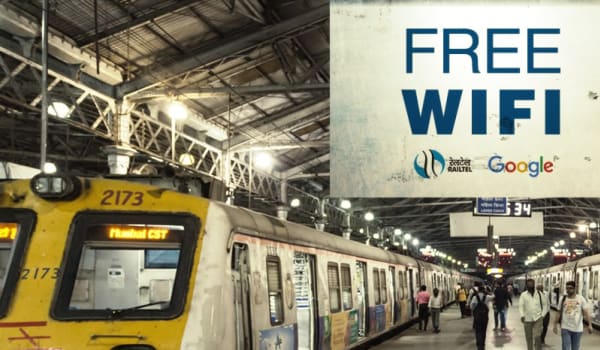
Google CEO Sundar Pichai has announced that over two million people are using the free Wi-Fi deployed by the search giant along with RailTel at major railway stations across India every month. He said they are using 15 times more data than they would on their cellular networks an average day.
But there is a sound logic behind Google collaborating on bringing free high-speed Internet to railway stations.
“Railway stations are the one place in India where you can get reliable power, fiber thanks to RailTel and most importantly almost all of the demographic of India passes through these stations. Imagine the amount of population that will pass through the top 100 stations of the country in a year or two. Being a point of transit, it is not not the same 10 million people every day,” explains Gulzar Azad, Head of Access Programs, Google India.
Since the first station, Mumbai Central, in January 2016, Google has connected 23 stations including Pune, Bhubaneswar, Bhopal, Ranchi, Patna, Ernakulam Junction and Vishakhapatnam Central. The plan for the world’s largest public Wi-Fi project will cover 100 railway stations.
Google was pondering over where they could see the experience divide plaguing Internet users in India the most and that is when they zeroed in on railway stations. “Imagine the span of population that passes through a station within a span of a year. For the top 100 stations that we are going to address this year, 10 million will be passing by those stations every single day,” says Azad. He adds that since these stations are places of transit, it will not be the same 10 million people who experience the free Wi-Fi every day. “We will actually be going through the population of the country over a period of time.”
For Google to bridge this experience divide, it was crucial to provide a “township kind” of experience. “So there is full coverage and very high capacity with every station being backed up by 1Gbps plus backhaul through fiber. And there are n number of access points across the station so that every single user is able to access a HD video stream, which needs a reliable consistent and low latency network,” says Azad.
Google wants to offers the same experience across all stations that it is connecting. So a person travelling on a long distance train from say Ernakulam Junction to New Delhi, gets the same experience at all connected stations along the way. “Even in the first phase the idea was to go across the country and this is why we have already connected at least one station in all of the Indian Railways’ 16 subdivisions,” says Azad. He says the project is actually Google engineering at work, in terms of designing the network and ensuring the experience is great.
While Pichai says that users on its free Wi-Fi consume 15 times more data than their mobile network a day, what is startling is that this is done in transit within an hour — as there is a cap on usage at the stations.
There have been anecdotes of people buying platform tickets just to use the Wi-Fi and finish work. Azad says he doesn’t have any data to back this up, but adds that some people who are using the service daily see this as a convenience and at times come early so that they can finish some work or download some YouTube videos. “We have seen students doing that. I see this as a good problem to have.”
Google’s free Wi-Fi in the stations is capped at one-hour per user, but there is no cap on volume of data for now.
© The Indian Express






